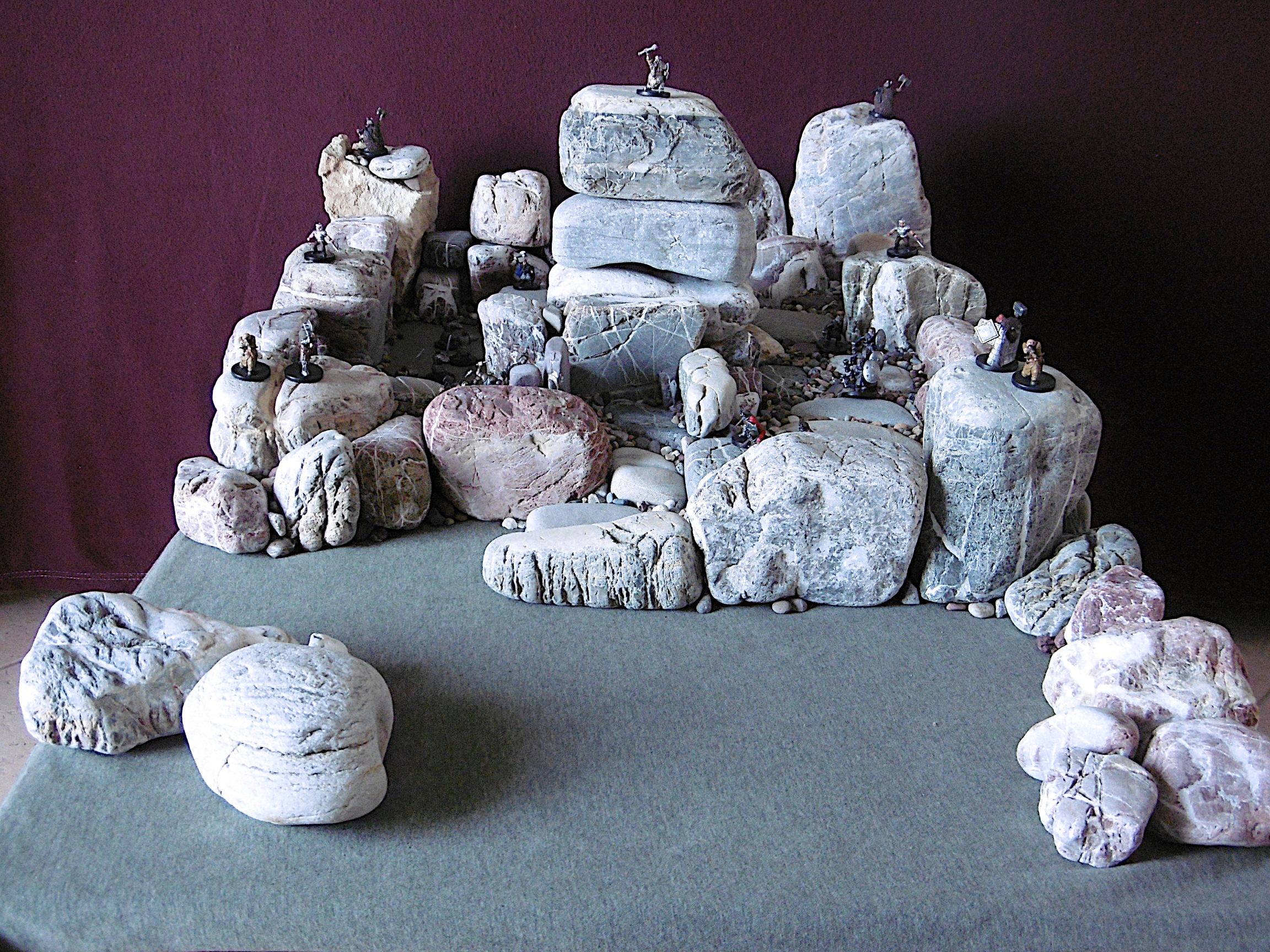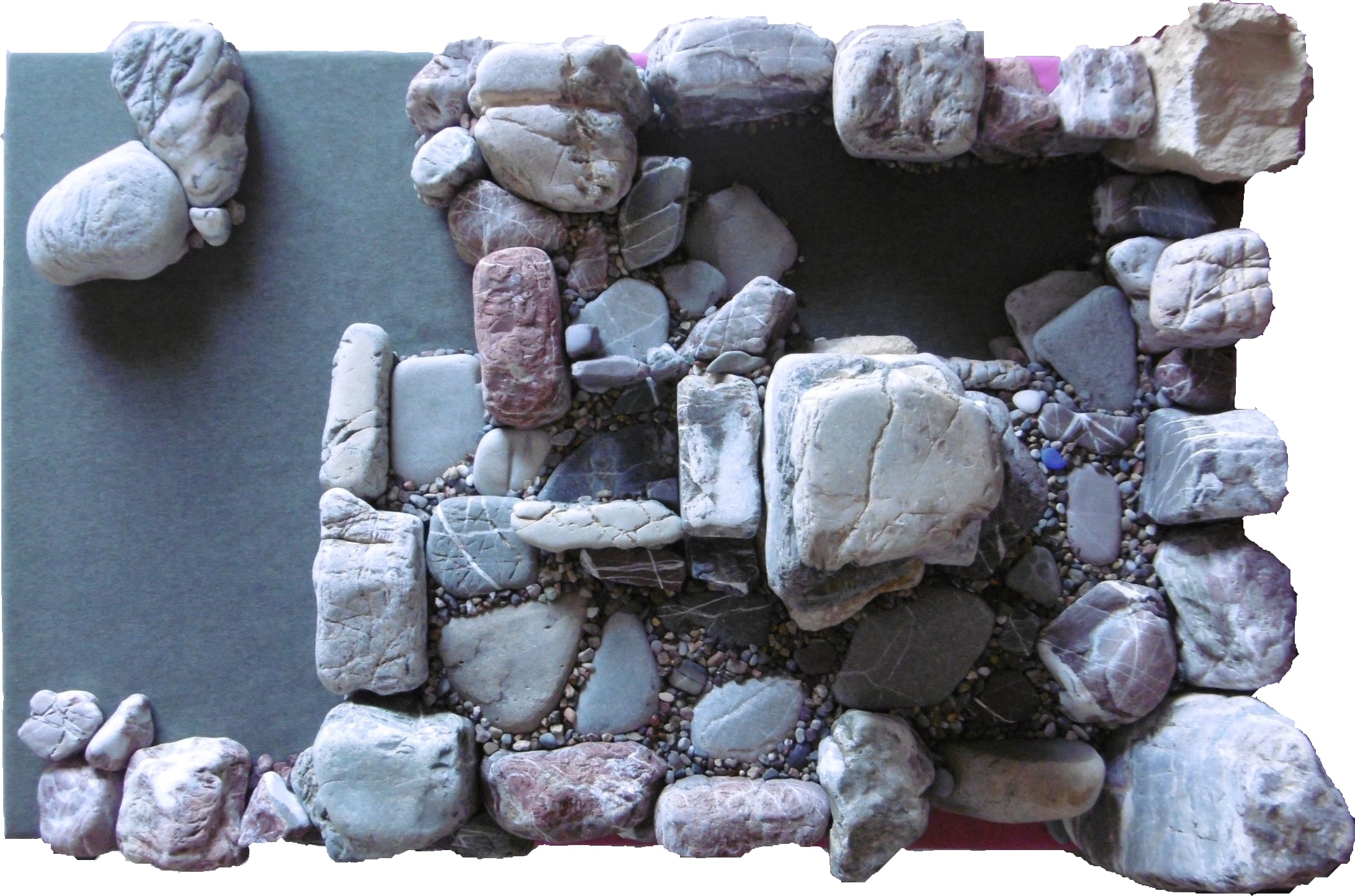As it is the dragon’s ingress to the subterranean domain he wishes to subjugate, the Throrgrmir Citadel is the focus of the Valormr Campaign. The campaign begins with the dragon’s raid on the citadel’s ramparts. The Chaos Armies invest its upper works throughout the war, which reaches a climax when the Forces of Law arrive to besiege the besiegers.
An autumn breeze at our backs, we climb a steady slope to the top of a rocky plateau. The noonday sun hovers above crenellations, like a crown before the moment of coronation. We approach the Throrgrmir Citadel from the south. Its forward parapets, 20 feet high, stretch between 25-foot corner towers, anchored into rock either side of the plateau. Bearing a stone marked by the rune of welcome, which serves as our invitation, we mount the entry stair, stepping east then north again before facing west at a massive gate carved from a granite block.

Showing the invitation and speaking the name Fjoldi Funderburk, for he is to be our host, the gate opens to us. We pass between drystone walls, mosaics of stones. Each stone is defined by a thin seem without mortar. We are greeted by a dwarf with a broad smile of large teeth like ivory squares. Fjoldi is our old friend and adventuring companion. His beard has a few more gray whiskers than the last time we saw him, and in place of a battle axe, he now carries the amulet of an administrator. But his green eyes flash at us when he makes short jokes about dwarven stature and human life spans.
After warm embraces, Fjoldi offers a tour of the citadel, which we readily accept. From the entry yard, we turn north, descending a few steps into a garden courtyard. We walk on stone paths through lush grasses amid wildflowers and fruit trees, bosquets of hydrangea, pink and blue, and round alyssum shrubs, snowy white. Their honey fragrance fills our nostrils.
On our right, the central donjon rises into a clear cerulean sky. Reaching into a low branch, Fjoldi pulls fruit and puts apples into our hands. “Crunch on that,” he says, “to take the edge off your journey’s hunger. Soon, you will feast at Harbard’s table,1 but first you must gird your strength for climbing stairs.” Here he raises an arm toward the donjon’s height, “For the tour ends with a view of the valley.”
“The tower’s base is twenty-five feet square,” he continues, “and it’s fifty feet high. Men build no higher. They say it won’t stand. But I’ll show you different in the city below. In Throrgardr, you will stand atop a tower that is in height three times its base width.”2
At the far end of the Greensward, as Fjoldi names it, we ascend another stair to the Stonesward. There, in the donjon’s north wall is set a great door of granite, like the gate, and even more massive. Etched upon its face, runes welcome friends and warn enemies.
Our host halts at the stair top. Between us and the door, set among floor stones, is a thick plate of blue glass. It gleams in the sunlight. Made from a large chunk of crystal discovered in caverns far below our feet, Fjoldi explains, it is the Throrgrmir Stone. “Dwarves kneel to kiss it when returning from a long journey. The stone brings blessings upon us, and it bestows curses upon enemies who step beyond it.”
Farther along, we come to a fountain set in the northeast corner. Water spouts from the mouth of a boar’s head. The sculpted stone is painted the same blue as the gleaming glass. Sapphire eyes look through a silver mask. Unless we hail from the world’s distant ends, we know that Throrgrmir means “masked boar,” and only the incurious are ignorant of the dwarven civilization’s founding by a forefather of that name.
As we progress now south, ever the donjon towering above, we pass along a wide, flat stone pavement between turrets and parapets. Fjoldi informs us that the unused fountain water drains into a cistern below the citadel. We are then encouraged to examine the smooth floor upon which we stand. Our human eyes cannot discern the Stonesward’s gentle slope from south to north and from east to west. Rainwater, he tells us, drains from tower tops and parapets and from interior courtyards into the cistern.
We now approach the Stonesward’s south end. Turning west, we find ourselves on a balcony, overlooking the broad stair by which we arrived. Fjoldi leaps to the balustrade and, in a few words, paints a picture. Dwarf maidens and children gather here to welcome foreign dignitaries, he tells us. The maids wear white silk dresses and crowns of pink flowers. “They dance with long blue sashes,” he says, twirling around his raised arm. “The children toss alyssum flowers at the guests’ feet, and the air is filled with their sweet aroma.” Fjoldi stops dancing. “And enemies are welcomed by dwarf crossbows.”
Finally, we climb the interior stairs to the donjon’s battlements. The view extends for miles and miles in all directions. The sun warms our cheeks, the breeze blows into our faces as we gaze across the forested valley. The autumn woods are a blanket of orange and gold.
“Look to the sky, my friends,” says Fjoldi. “Twice this year, we’ve seen a dragon.”

Width 21″, length 25″, height 10″.3 The structure is made entirely from beach stones. The “Throrgrmir Stone” is a piece of glass worn smooth by sand and waves. The plateau is a table, 22½″ × 35½″, upon which I spread a sheet—we say “magenta”—to protect it and a green T-shirt, seems cut out, to simulate ground cover.
Notes
1 Our host refers to Dwarf King Harbard V. Our visit to the citadel is a few weeks prior to events of the Valormr Campaign.
2 Fjoldi speaks no dwarven cockalorum. Exploring the ruins of that legendary city, adventurers in the time of Wyrmwyrd may discover a tower, 70 feet high on a 20-foot base. The “Impossible Tower,” as it is called, yet stands after thousands of years. As Throrgardr was the subject of my first beach stone tabletop construction, I have pictures.
3 The Throrgrmir Citadel’s size is comparable to that of the model Bodenburg Castle. Henry Bodenstedt’s rules for “Siege of Bodenburg” (1967) show the castle on a 20-by-20-inch plate. I don’t see reference in the rules, but by rough measurements made from photographs, I estimate the keep’s height at about 12 inches. Throrgrmir, though, is less portable.